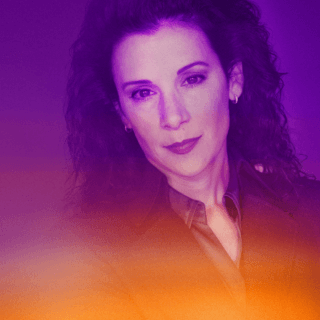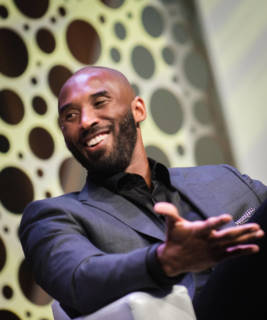Esports has seen tremendous growth over the past year, with major non-endemic brands such as Mercedes-Benz getting into the space and 17 NBA teams partnering with 2K Sports to create the NBA 2K Esports League. That’s why esports was a hot topic during the New York Media Festival’s games conference this year, with industry insiders discussing its phenomenal growth and how more non-endemic brands can become involved.
“In 2017, what we see is that two of the biggest players in esports—Riot and Activision Blizzard—are now taking steps to create these franchise leagues, which was always the dream,” said Sundance Digiovanni, vice president of brand and content at Activision Blizzard, who has been involved in esports since the beginning and is the co-founder of MLG. “Everyone talks about the golden age. We’re now just starting the golden age, where we have the first franchise and global leagues. It’s starting to look and feel a lot more like traditional sports, but with this amazing opportunity globally—digital first—toward an audience that’s shying away from traditional sports in a lot of ways.”
Although esports may experience some hiccups along the way, Digiovanni believes that it’s well on its way to becoming a sustainable business.
It’s Not Television
One of the major themes that arose during the discussions is how esports is a digital-first form of entertainment, and it must be treated as such. With the exception of Turner’s ELeague, most linear channels have struggled with integrating esports into its programming. Digiovanni explained why TV marketing strategies won’t work on mobile.
“Most teenagers don’t watch TV,” he said. “They consume content on iPhones or Android devices, and the majority of it is probably socially generated. They don’t want to be bombarded with something that feels like there’s a message crafted to be delivered on radio, TV or somewhere else. Just think about the delivery medium and think about what you’re offering them in that short period of time. In a really small window, you could become a hero brand if you do it properly.”
Marty Strenczewilk, CEO and co-founder of Splyce, put things more bluntly. “TV is dead,” he said. “TV is now a monitor. I haven’t had cable in a long time and I don’t miss it, but what I do miss are the types of entertainment that haven’t figured out digital.”
Strenczewilk cited basketball as a prime example. “I can’t watch basketball online. I get an inferior experience unless I spend significant money. If I want to watch League of Legends online, I spend no money and I get a high-quality experience that’s better because of chat and digital engagement that I couldn’t do otherwise. It’s not just about the fact that consumers are younger and have always consumed a product that way, but we consume it in a way that’s better digitally.”
It’s interesting that Strenczewilk mentioned the NBA, considering how more than half of the franchises recently came together to create an esports league. Brendan Donohue, managing director of NBA 2K Esports League, explained that it was actually the NBA team owners who wanted to get further into esports in the first place.
“A lot of our owners already own teams in other esports titles, so they were already invested in esports,” said Donohue. He added that it was natural for NBA 2K become involved, since the video game has been experiencing exponential growth over the past decade. Having 17 NBA teams and their organizations put their weight and marketing savvy behind a successful video game makes for great entertainment.
Donohue described the NBA audience as “tech-savvy, millennial and multicultural,” which also happens to be the same kind of audience playing NBA 2K. However, he also emphasized how two-thirds of the NBA’s social media followers live outside of North America, making for a massive audience, and an esports league is another way to engage them.
“We certainly see esports as a global entity, and a large number of NBA 2K games are sold outside of the US,” said Donohue. “They offer a free version of the game through Tencent in China, where we have 34 million registered users. So, we see a global appetite for this.”
This echoes Digiovanni’s sentiment when he said, “In this space, if you say that you need to tune in at eight o’clock on Monday to watch this match on this channel only, some people will but a lot of people say that there are a thousand other channels on Twitch, YouTube and Facebook for me to look at. Maybe they’ll watch one of their favorite streamers instead. You’ve got to make it accessible, and you’ve got to also understand that a lot of times the audience is international.”
When considering the future of esports as a form of entertainment, Digiovanni said that he envisioned a delivery that avoided a lot of pitfalls that traditional sports media fell into.
“We can do this without a lot of the overhead and issues of traditional sports, but in a way that looks like traditional sports,” said Digiovanni. “We say we’re the ESPN of esports, but what I’d rather be is the first premier esports-focused network that happens to own some IP and leagues, but also partners with other parties like Riot and Valve, putting everybody’s content through this network. Imagine that we have multiple channels on OTT [TV], digital [on] Twitch, YouTube and our own streaming platforms and inside our own games. If you’re a fan of any of these things, they’re accessible to you when you want, where you want and how you want.”
The Growth Of Non-Endemic Sponsors
As the saying goes, you only have one chance to make a first impression, and that’s especially true of the esports world. The word “authentic” tends to be overused, but it’s the best way for brands to enter into the space.
One of the major takeaways is that brands have to do it right by being authentic, and they can’t just dip their toes in the water—they have to go all in. Comcast Xfinity, Arby’s and Mercedes-Benz were cited as examples, and women’s brands such as Dove and Calvin Klein are looking to grow in the space.
“Gaming is still the one activity in the entertainment space where you get sole focus of that user,” said Dave Madden, senior vice president of global brand solutions at EA, commenting on how viewers are often multitasking when watching television or on their phones. However, games get 100 percent of their attention when they’re playing, whether it be for five minutes or two hours.
“When brands can figure out how to be in that environment and add value to the experience, the results are [great],” said Madden. “There’s a simple reason for that. They love being rewarded with added content and experiences that help the gameplay, but they’re also so interested in the experience [of playing]. Brands get a better relationship with the consumer—the engagement is much higher.”
As an example of successful engagement, Madden cited FIFA 18’s partnership with Coca-Cola and how the soda brand sponsored the fictional character Alex Hunter as a spokesperson.
Non-endemic sponsors should also look to real-life people and brands that are already involved in esports, whether they be endemic companies such as HyperX, teams or individual players, and partner to integrate into esports in an authentic way.
Mark Tekunoff, corporate public relations manager at HyperX, said that the computer hardware and peripheral company didn’t see non-endemic brands as competitors. “We see an opportunity to work with non-endemics and help them with the value that we’ve created over the last 10 years using what we know and the fact that we’re part of the gaming community. It’s a mutual collaboration between us and them, and a number of them are approaching us now asking what we’ve learned.”
“It’s OK not to know all the answers,” said Digiovanni, offering advice from the Activision Blizzard side. “It’s OK to ask questions and collaborate. That’s my advice to any brand or agency looking at this space, whether you’re working with a team, a league, player sponsorship or an event. Just ask for some examples of previous successes and see what has worked. More importantly, ask what has not worked. If you can learn from someone else’s mistakes, that’s the best play.”
Dave Correa, ESL’s director of sponsorship sales, talked about how some brands suffer a “paralysis by analysis,” because they’re unsure of whether an esports audience will be receptive to advertising.
“Really, it’s not that difficult,” said Correa. “Basically, if you can provide an opportunity through content, an experience or creating a whole new amateur league that leads into a pro league—whatever it might be—if a brand can figure out what that opportunity is and deliver that back to the fan community, you’re going to be very well received. It’s a super-intelligent audience and they understand that advertising is part of the ecosystem. They just don’t want to be hit over the head with it a million times without some additive value.”
Correa also emphasized how brands need to identify the right games that fit with their audiences.
“You don’t hear a brand marketer on the traditional sports side say, ‘let’s get into sports,’” said Correa. “It doesn’t happen because that’s not how you think about it. You have to think about the titles that best align with what you’re going to do and then figure out the opportunities that best fit with that particular title.”
He added that even though there are hundreds of great video games out there, there aren’t hundreds of esports.
“Games like GTA or Destiny 2 are fantastic, but they’re not esports,” Correa explained. “I think some brands get caught up in the hype and look at titles that don’t necessarily have a competitive scene.”
Streamlabs CEO and co-Founder Ali Moiz noted that, although esports is a big part of livestreamed content, what often gets overlooked is the fact that 80 percent of the viewable hours on Twitch are actually streamers, not esports tournaments. These broadcasts may include pro players streaming during their off-hours and entertainers who are good at games. Whatever the case, Moiz said that people who come for esports end up spending most of their time watching these individuals.
“Gaming is still the largest [livestreaming] category today here in the US,” explained Moiz. “But akin to what is happening in China and broadly in Asia, the fastest growing categories are actually non-gaming . . . in five-to-10 years, this stuff is going to be bigger in livestreaming than gaming.”




